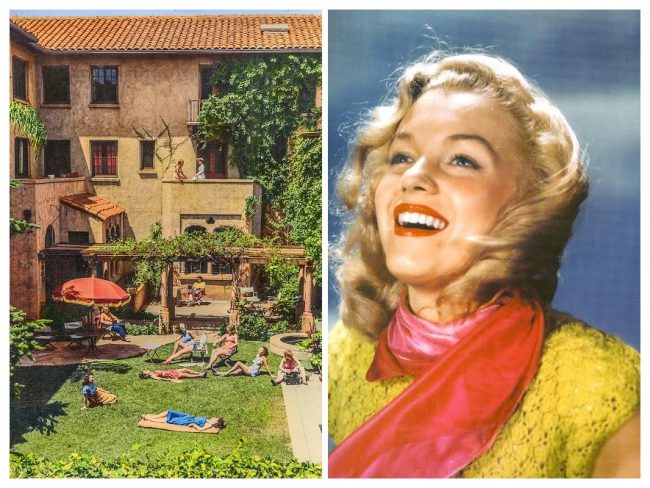
Film historian Cari Beauchamp, who last year wrote ‘Atomic Blonde‘, an article detailing Marilyn’s mysterious 1953 PSA for the US Military, has now contributed a definitive history of the all-female Hollywood Studio Club, where Marilyn lived on and off during the late 1940s, to Vanity Fair. (Marilyn had mixed feelings about her stay, often finding it restrictive and perhaps reminding her of her time in an orphanage. However, there is little doubt that the Studio Club offered her some much-needed stability in the early days of her career.)
“For more than a century in Hollywood, young women have learned in horrendous ways that men in power often consider them goods to be bartered or simply consumed. There is little new about #MeToo, but what is new is that women are shattering their isolation by speaking out and finding strength and community as a result. Yet for nearly 60 years there was a residence that housed women (10,000 in all) in a protected and supportive environment. And though few people remember the Hollywood Studio Club, a recounting of its neglected history reveals how little has changed—and how powerful female friendships can be.
[Julia] Morgan’s multiarched structure, designed in the Italian Renaissance Revival style, opened to much fanfare in 1926. The first floor featured a spacious lobby, writing rooms, a library, a large dining area, and a stage. The two upper stories consisted of single, double, and triple rooms to house 100 women—each paying 10 to 15 dollars a week for lodging and two meals a day. They were indirectly inspired by Hollywood luminaries such as Gloria Swanson, Jackie Coogan, and Frances Marion, whose names appeared on small brass plaques above the bedroom doors. (Each had donated $1,000 to the club. Norma Talmadge had pitched in $5,000.) The rules of the house were simple: You had to be working or seeking work in show business, be between 18 and 35 years old, and not stay longer than three years. Men were prohibited above the first floor.
Today, the fellow resident [Barbara] Rush remembers best is Marilyn Monroe: ‘She wasn’t a bombshell then, and was so sweet with that whispery voice.’ Robert Wagner, who, along with Monroe, was under contract at Twentieth Century Fox, recalls dropping off Monroe at the HSC and thinking ‘the concept of the place was just fantastic,’ especially for someone like her, who ‘everybody loved and felt protective of.’In late 1949, Monroe secured a part in John Huston’s The Asphalt Jungle. While she had had small roles at Fox, Monroe would later say that she so needed $50 in 1949 that she agreed to pose for what would become her infamous nude calendar. Even if the HSC suffered negative backlash as a result, house director Florence Williams fondly remembered Monroe. When asked who was the most stunning woman she ever encountered there, Williams answered, ‘Marilyn Monroe, because she was even beautiful first thing in the morning.’
As the ’60s and ’70s brought about enormous culture shifts, the number of residents dwindled to the point that the Hollywood Studio Club was no longer financially sustainable. The doors were closed in 1975 and the furnishings were auctioned off. Several years later, the building was added to the National Register of Historic Places and continued to be maintained by the Y. In the fall of 2018, Faye Washington, CEO of the YWCA Greater Los Angeles, announced a new partnership with PATH (People Assisting the Homeless) to provide transitional housing for about 60 homeless women at the HSC. One of the rules: Residents, like the starry-eyed women of years past, would be allowed to stay for a maximum of three years.”